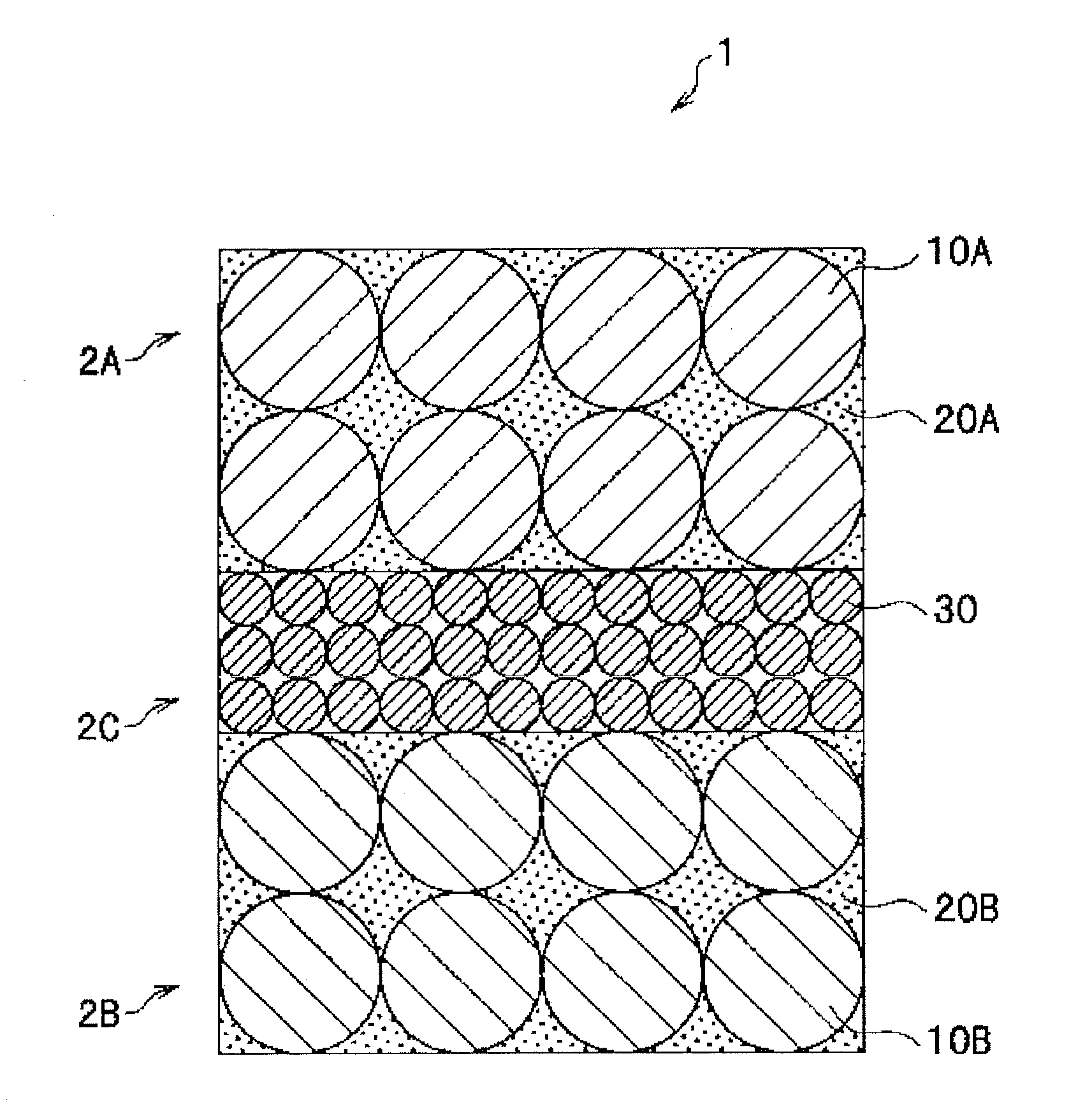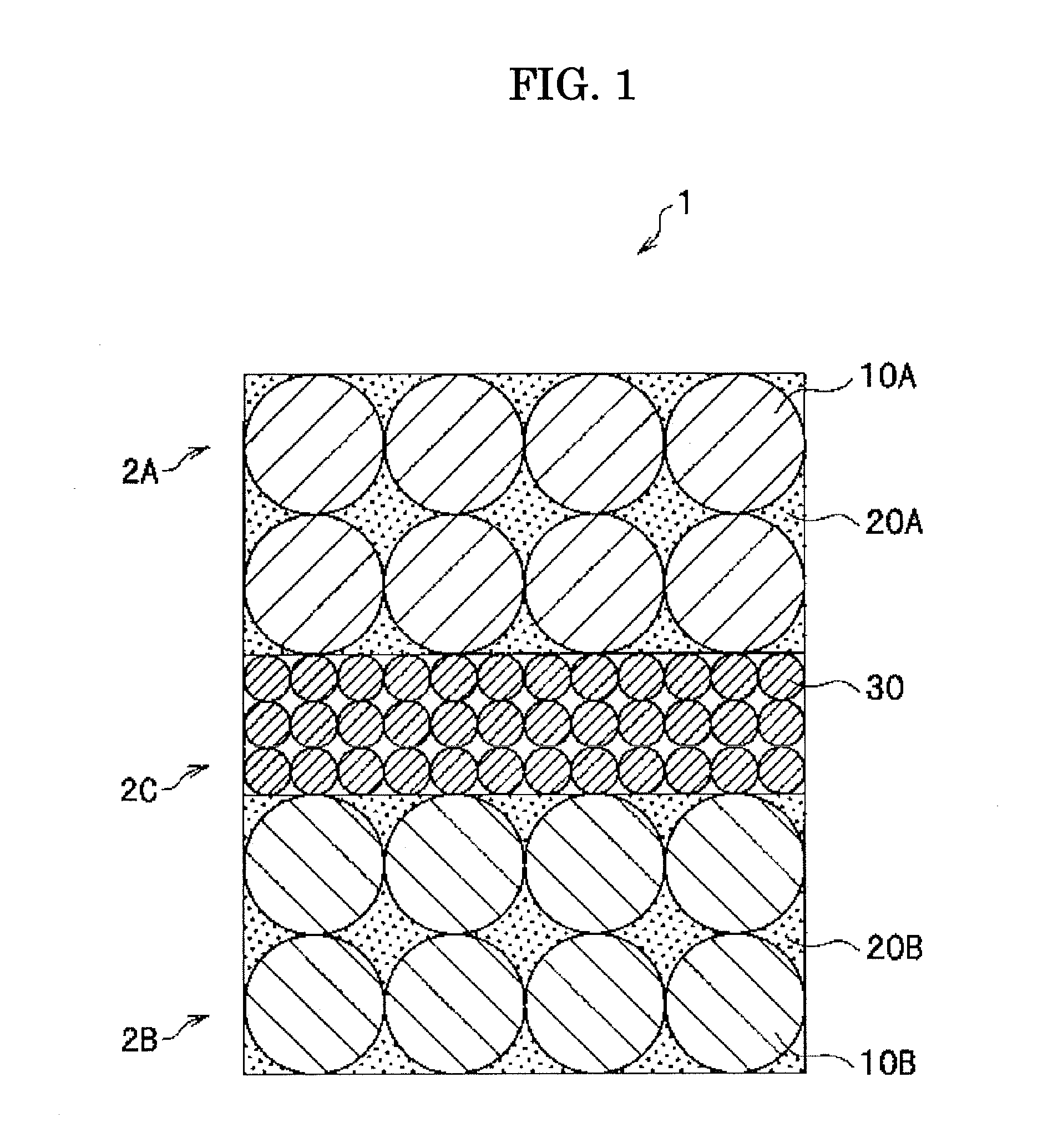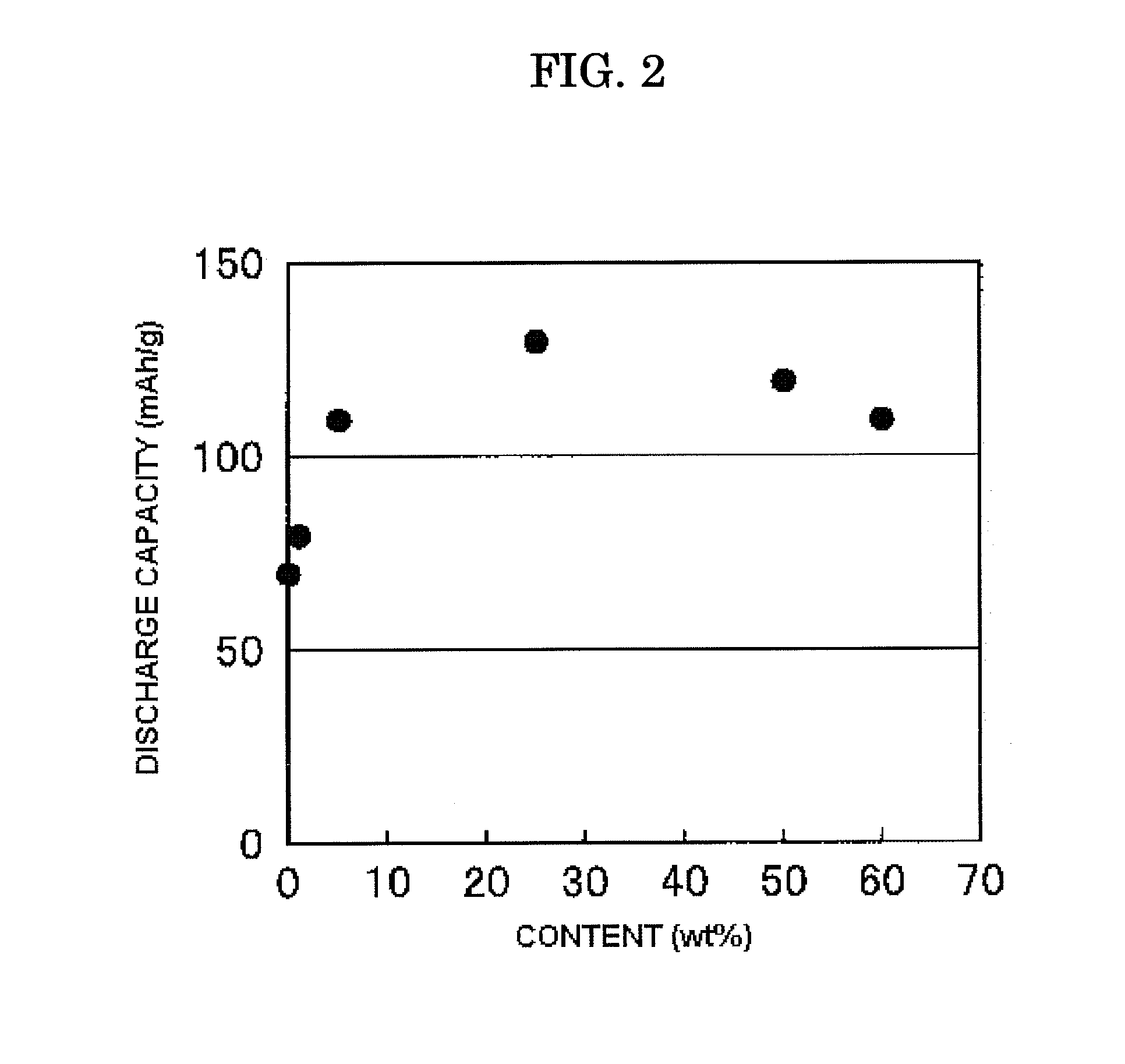All-solid state battery, electrode for all-solid state battery, and method of manufacturing the same
a technology of all-solid-state batteries and electrodes, which is applied in the direction of batteries, sustainable manufacturing/processing, cell components, etc., can solve the problems of increasing internal resistance, restricting the selection of battery materials, and reducing the quality of contact between active materials and solid-state batteries, so as to improve discharge capacity and improve contact quality
- Summary
- Abstract
- Description
- Claims
- Application Information
AI Technical Summary
Benefits of technology
Problems solved by technology
Method used
Image
Examples
example 1
[0051]As example 1, an all-solid state battery in which the content of the deliquescent solid electrolyte was 25 mass % per electrode was produced according to the following procedure.
[0052]This procedure started with weighing 1.85 g of lithium carbonate (Li2CO3) and 4.55 g of divanadium pentaoxide (V2O5), putting in a mortar, and homogeneously mixing. Thereafter, the thus-obtained mixture was transferred to an alumina-made crucible having 60 mm in outside diameter, and is heat-treated in a box-shaped electric furnace. Incidentally, this heat treatment was performed in the atmosphere in a way that: the temperature was raised to 580° C. at a rate of 10° C. per minute; and subsequently, this temperature was held for 10 hours. After this heat treatment, the mixture was cooled to 100° C. Thereby, lithium metavanadate (LiVO3) was obtained.
[0053]Thereafter, weighing 1 mass % per dry weight of the electrode from the deliquescent solid electrolyte obtained as described above, and all of it ...
example 2
[0055]As example 2, an all-solid state battery was produced in which the content of the deliquescent solid electrolyte was 5 mass % per electrode. Incidentally, the all-solid state battery of example 2 was produced according to the same procedure as was the all-solid state battery of example 1, except that the weight of the deliquescent solid electrolyte to be used to produce the electrode was different between example 1 and example 2.
example 3
[0056]As example 3, an all-solid state battery was produced in which the content of the deliquescent solid electrolyte was 25 mass % per electrode. Incidentally, the all-solid state battery of example 3 was produced according to the same procedure as was the all-solid state battery of example 1, except that the weight of the deliquescent solid electrolyte to be used to produce the electrode was different between example 1 and example 3.
PUM
| Property | Measurement | Unit |
|---|---|---|
| temperature | aaaaa | aaaaa |
| temperature | aaaaa | aaaaa |
| temperature | aaaaa | aaaaa |
Abstract
Description
Claims
Application Information
 Login to View More
Login to View More - R&D
- Intellectual Property
- Life Sciences
- Materials
- Tech Scout
- Unparalleled Data Quality
- Higher Quality Content
- 60% Fewer Hallucinations
Browse by: Latest US Patents, China's latest patents, Technical Efficacy Thesaurus, Application Domain, Technology Topic, Popular Technical Reports.
© 2025 PatSnap. All rights reserved.Legal|Privacy policy|Modern Slavery Act Transparency Statement|Sitemap|About US| Contact US: help@patsnap.com



